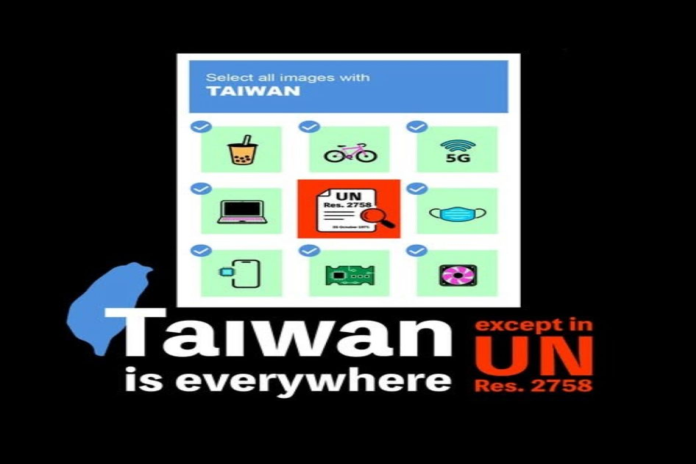By Sam Bayat
As a Canadian attorney specializing in corporate business immigration with over 30 years of experience, I can provide a comprehensive analysis of the challenge of harmonizing Canada’s immigration and industrial policies.
This is a critical issue for Canada’s future economic prosperity and global competitiveness. In a time of rapid technological change and global economic shifts, Canada is at a crossroads and our future prosperity depends on aligning two critical policy areas: immigration and industrial strategy.
Recent discussions in the United States, as highlighted in Foreign Affairs’ recent article, “Industrial Policy Needs an Immigration Policy”, underscore the importance of this alignment. For Canada, the stakes are equally high, given its demographic challenges and reliance on immigration for economic growth. It is imperative to align Canada’s industrial policy to foster innovation, enhance productivity, and maintain global competitiveness in critical sectors. Meanwhile, our immigration policy seeks to address labour shortages, attract skilled talent, and sustain population growth. These two policy streams are often developed and implemented in isolation and must be harmonized to maximize their collective impact on our economic future.
The foreign affairs article “Industrial Policy Needs Immigration Policy” highlights how the United States faces similar challenges. For Canada, this alignment is even more crucial. With one of the world’s most open immigration systems, Canada has the potential to leverage its human capital influx to drive industrial growth and innovation.
Our Skilled Workers program is mainly the Express Entry system, introduced in 2015 to manage applications for permanent residence under specific economic immigration programs. This system uses a Comprehensive Ranking System (CRS) to assess and rank candidates based on factors such as age, education, language proficiency, and work experience. The admission of economic immigrant principal applicants who intended to work in skilled trades increased rapidly from around 2,500 annually in the first half of the 2000s to around 7,100 in 2015, then decreased to 6,800 in 2019. This increase was primarily achieved through the Provincial Nominee Program and the Canadian Experience Class, with the Federal Skilled Trades Program, introduced in 2013, playing a minor role.
However, recent data suggests that while skilled trades immigrants initially have higher employment rates, their earnings growth is slower than that of other economic immigrants. This highlights the need for a more nuanced approach to immigration that aligns with long-term industrial and financial goals.
From a US perspective, they have a discourse on aligning industrial and immigration policies, which must offer valuable insight for Canada. Key lessons and opportunities that Canada can learn from international examples and refine its approach are to:
Targeted Skills Attraction: Immigration policies should be tailored to attract individuals with skills that align with industrial policy priorities, such as clean energy, artificial intelligence, and advanced manufacturing.
Regional Development: Immigration can be used as a tool to bolster industrial development in specific regions, addressing local labour shortages and fostering economic growth outside major urban centers.
Start-up Ecosystem: Facilitating immigration for entrepreneurs and innovators can enhance the start-up ecosystem, driving innovation in key industrial sectors.
Germany’s “Skilled Immigration Act” targets specific sectors facing skills shortages, such as IT, engineering, and healthcare. This alignment between immigration and industry needs has helped Germany address its workforce gaps and remain competitive. Similarly, Australia’s “Global Talent Visa” attracts highly skilled individuals in priority industries, including space, fintech, and advanced manufacturing, aligning immigration directly with its economic goals.
While these lessons are valuable, Canada’s unique circumstances require a tailored approach and unlike the US, Canada relies more heavily on immigration for population growth and labor force expansion. This dependency creates both opportunities and challenges in aligning immigration with industrial policy.
Opportunities
Canada must be more selective and strategic in its immigrant selection process, directly targeting skills needed for industrial growth. The country’s positive international reputation can be leveraged to attract top global talent in key industrial sectors.
Challenges
Balancing the need for high-skilled workers with other immigration objectives, such as family reunification and humanitarian commitments. Ensuring equitable distribution of immigrant talent across different regions and sectors of the economy. Addressing the slower earnings growth of skilled trades immigrants compared to other economic immigrants.
The “Immigration Before Automation” perspective in foreign affairs podcast “Immigration Before Automation” introduces another crucial dimension to this discussion. It suggests that, in many cases, immigration can be a more immediate and effective solution to labour shortages than automation. For Canada, this perspective is particularly relevant. While automation and AI are reshaping industries, many sectors in Canada – from healthcare to agriculture – face immediate labour shortages that cannot be addressed by technology alone. A strategic immigration policy can help bridge these gaps while industrial policies work on long-term technological solutions.
In the latter part of the podcast, Immigration Before Automation”, Lant Pritchett introduces a crucial distinction in immigration policy: separating the concept of temporary foreign workers from those who are intended to become future citizens. This perspective offers a new dimension to Canada’s immigration strategy.
Temporary Foreign Workers
Address immediate labour market needs without committing to long-term demographic changes. Allow for flexibility in responding to economic cycles and industry-specific demands. Provide opportunities for workers from developing countries to earn higher wages temporarily.
Future Citizens
Focus on long-term integration and contribution to Canadian society. Align with Canada’s broader demographic and cultural goals. Emphasize skills and attributes that contribute to long-term economic and social development.
This dual approach could allow us to meet our short-term labour market demands more efficiently, maintain greater control over long-term demographic changes and provide clearer pathways for both temporary workers and potential permanent residents. However, implementing this strategy would require developing clear, separate policies for temporary workers and potential permanent residents; Creating flexible pathways for temporary workers to transition to permanent residency if desired and beneficial to Canada; ensuring robust protections for temporary workers to prevent exploitation; and harmonization strategies to effectively align immigration and industrial policies while incorporating the temporary worker/future citizen distinction.
Canada should consider the following strategies
Skills-Based Immigration System: Refine the Express Entry system to give more weight to skills aligning with industrial policy priorities while maintaining a separate stream for potential long-term citizens.
Regional Immigration Programs: Expand programs like the Provincial Nominee Program to match better immigrants with regional industrial needs, including temporary worker programs tailored to local economic cycles.
International Student Retention: Enhance pathways for international students in key fields to transition to permanent residency, viewing them as potential future citizens who are already acculturated to Canadian society.
Industry-Specific Immigration Streams: Create targeted immigration streams for sectors deemed critical to Canada’s industrial strategy, with options for both temporary and permanent migration options.
Start-up Visa Enhancement: Expand and streamline the Start-up Visa program to attract innovative entrepreneurs in priority industrial sectors, focusing on those with potential for long-term contribution to Canada’s economy.
Labor Market Impact Assessments (LMIA): Reform the LMIA process to respond more to rapidly evolving industrial needs, particularly for temporary worker programs.
Credential Recognition: Improve and expedite foreign credential recognition processes, especially in high-demand industrial sectors, to facilitate quicker integration of both temporary and permanent skilled immigrants.
Integration Support: Enhance settlement services to ensure immigrants can quickly integrate into the Canadian workforce and contribute to industrial growth, with additional support for those on the path to citizenship.
Temporary Worker Programs: Develop robust temporary foreign worker programs that address immediate labour shortages while providing clear terms and protections.
Citizenship Pathways: Create transparent and merit-based pathways for temporary workers to transition to permanent residency and citizenship if they demonstrate long-term value to Canadian society and the economy.
Aligning immigration and industrial policies will be challenging, considering we must balance Short-term and Long-term needs as immigration can address immediate labour shortages, but long-term industrial competitiveness may require investments in education and training for the domestic workforce. We must also avoid over-dependence as in leveraging immigration for industrial growth, we must also invest in developing domestic talent to ensure a sustainable skill base. The ethical considerations on policies must also balance our economic needs to ensure fair treatment of immigrants and to avoid brain drain from developing countries.
It will be challenging to manage temporary worker programs, ensuring that they do not lead to a permanent underclass or displace opportunities for Canadian workers. Also, if they are to integrate, we must balance the needs of temporary workers with the long-term integration requirements as future citizens.
The harmonization of Canada’s immigration and industrial policies, coupled with a nuanced approach to temporary and permanent migration, is not just an economic imperative; it’s a vision for the country’s future. By strategically aligning these policy areas, we can be a global leader in innovation, sustainability, and inclusive growth. This alignment requires a whole-of-government approach, breaking down silos between immigration authorities, economic development agencies, and industrial policymakers. It also demands close collaboration with provinces, territories, and the private sector to ensure policies reflect diverse regional needs and industrial priorities.
As Canada navigates the challenges of the 21st century, from climate change to technological disruption, a harmonized approach to immigration and industrial policy will be vital to building a resilient, innovative, and prosperous nation. By learning from global discussions while tailoring solutions to its unique context, Canada can create a model for sustainable economic growth that leverages its greatest strength: its diverse and talented people, whether here temporarily or as future citizens.






